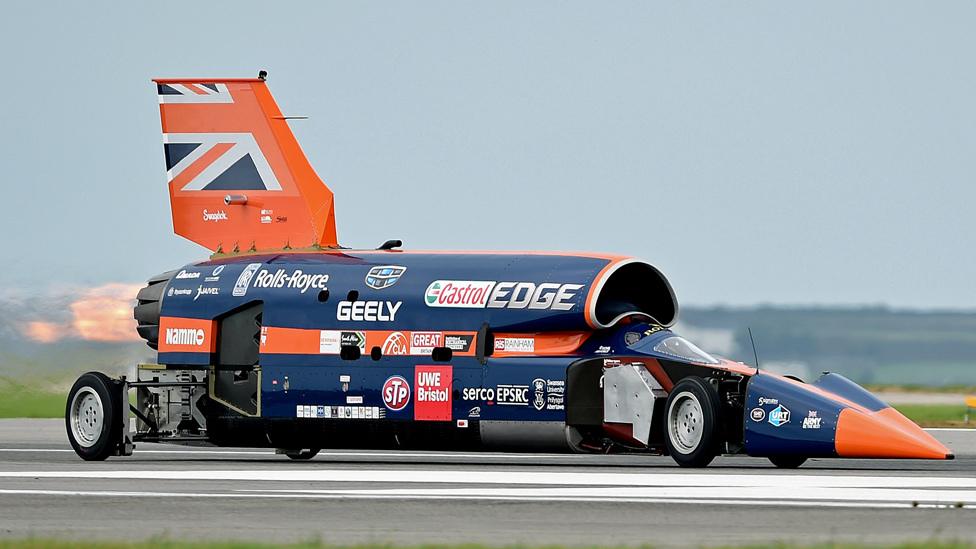Delay for Bloodhound supersonic car's high-speed trials
- Published
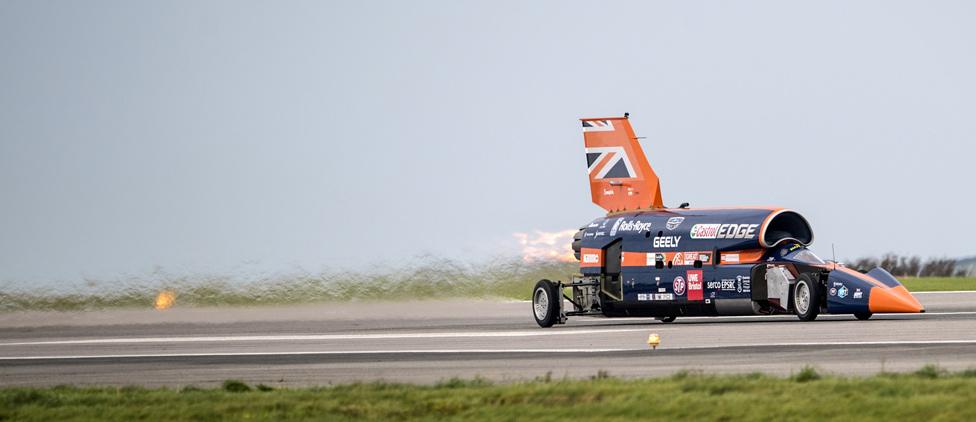
The car conducted "slow speed" trials in October last year
The Bloodhound 1,000mph car project is going to compress its schedule over the next 18 months.
It had planned runs above 500mph later this year before trying to break the world land speed record in late 2019.
The timing of the record attempt will not change, but those initial trials are now being pushed back to May of next year.
Availability of funding is part of the reason, but engineers also want a more complete car when they test it.
Had they gone ahead with running this autumn, Bloodhound would have been missing some key exterior composites, including winglets and air-brakes.
"From an engineering point of view, the change in schedule makes sense," said Bloodhound's chief engineer, Mark Chapman.
"It means the car we start running with in South Africa, and gathering data on, is more like the car we're going to break the record with," he told BBC News.
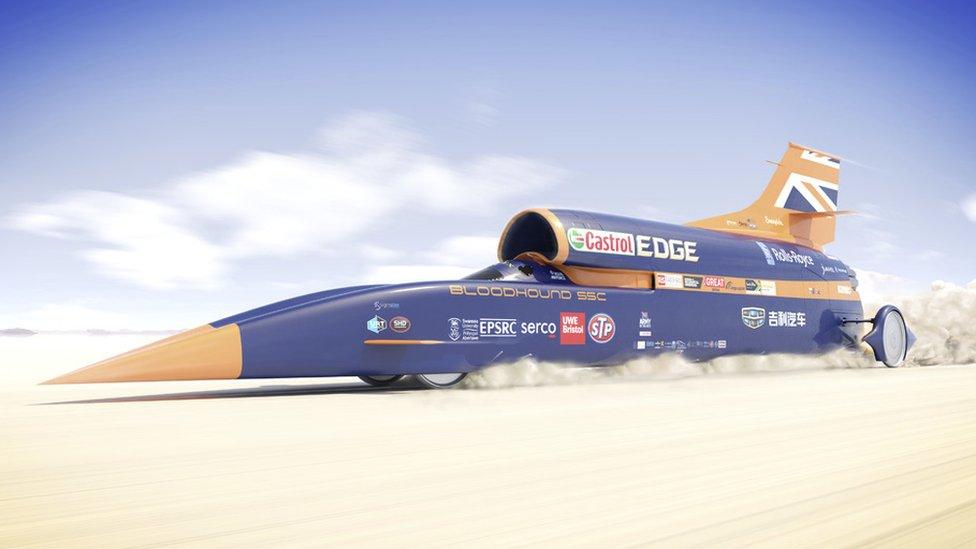
Bloodhound is aiming to raise the existing land speed record of 763mph (1,228km/h) set back in 1997, first to 800mph and then to over 1,000mph.
The arrow-shaped vehicle will use a Eurofighter-Typhoon jet engine in tandem with a rocket to push itself through the sound barrier.
It will do this on a specially prepared raceway - a dried-out lakebed called Hakskeen Pan, in Northern Cape.
The project has turned out to be far more complex and difficult to pull off than anyone thought at the outset.
Launched back in 2008, the early hope was that a new record bid could be made in 2011. But the scale and costs of this land speed attempt have dwarfed all previous efforts.
Richard Noble, himself a former land speed record holder, is the director of Bloodhound, external.
He claimed the team was at a breakthrough moment in terms of cash flow. He said recent discussions with a third party would "greatly enhance Bloodhound's ability to raise funds and achieve its goals" - although he would not divulge further details at this stage.
"There have been many false dawns over the life of the project and we have, regrettably but unavoidably, tested the patience of our friends, supporters and team," Mr Noble wrote in a statement published on the project's website on Wednesday.
"The Bloodhound leadership team firmly believes this development will be a game changer... but we want to prove this, not merely hope for it."
One reason for the delay in putting the finishing touches to the build of the car is the loss of two composites suppliers, which have recently gone into receivership.
They would have produced the winglets and air-brakes - essential components needed to run the car stably at very high speed but then also to slow it down at the end of a run.
These components must now be sourced from elsewhere.
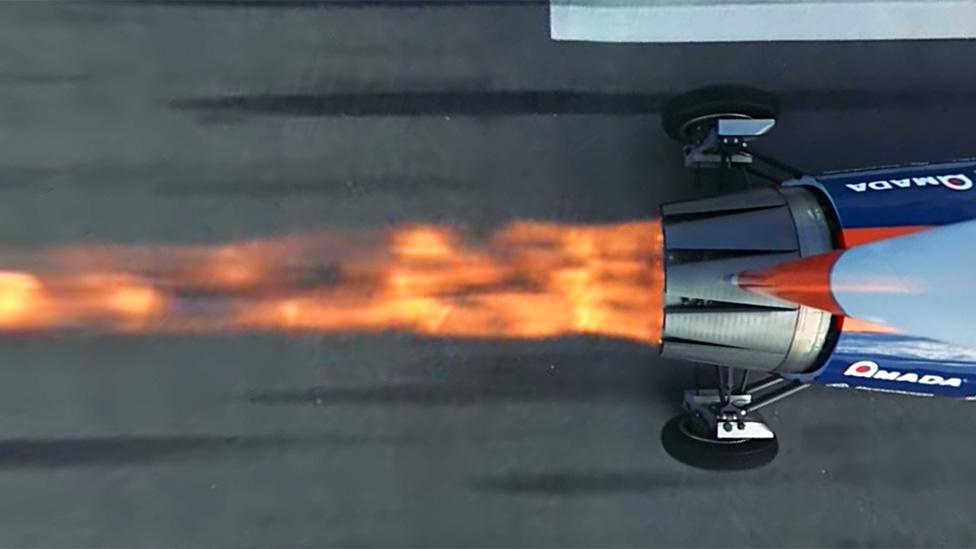
When the car runs in May next year it will do so with the jet only
Bloodhound had a successful shakedown at Newquay in the southwest of England last October that got the vehicle up to 200mph.
When it starts running at Hakskeen Pan in May 2019, it will endeavour to go beyond 500/600mph.
To do this it needs only its jet engine. To go even faster will require the rocket motor, which is still under development.
The intention is to use the power unit first in a mono-propellant mode. That is, it will produce thrust merely through the catalysed decomposition of concentrated hydrogen peroxide. This ought to be sufficient to push the car through 800mph and break the existing record - when allied to the jet engine.
But then in a second year of running on Hakskeen Pan, the motor will be switched to full hybrid mode, which would see a solid fuel grain burnt in the presence of the liquid hydrogen peroxide. It is in this configuration that engineers believe Bloodhound can be driven beyond 1,000mph - again when used in tandem with the Eurofighter Rolls-Royce turbofan.
The rocket partner is the Norwegian aerospace and defence company Nammo.
The firm came up with the hybrid design for use in a "sounding" rocket to go to space. This is the Norwegians' primary application and Bloodhound must fit around this work.
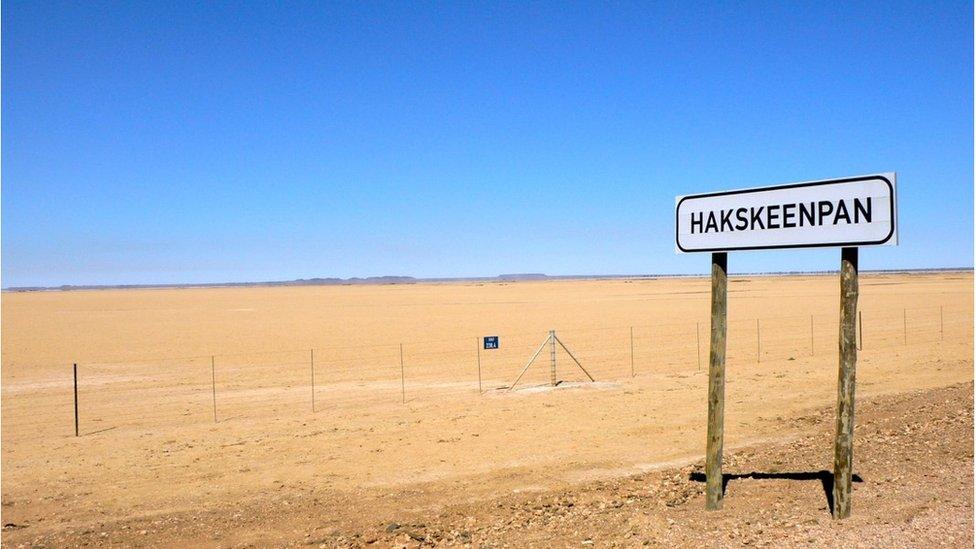
The lakebed has been prepared by the Northern Cape government
Mr Chapman said his team would push ahead in the next few months with the introduction of an electric element to Bloodhound.
At the moment, a Jaguar V8 engine is in place to drive the pump that pushes the high-test peroxide through the rocket motor.
This could be done by some sort of battery or super capacitor, he believes.
"It's a development we were looking to do in the spring of next year. We can now pull that forward and do it in the time we would have been deploying to South Africa this year," he told BBC News.
"We're always looking to the future, and there are some very interesting electric technologies out there, and it is just a question of finding the right commercial partners who want to showcase it in Bloodhound."
Once deployed to South Africa in April/May, the car will stay in the country. A technical centre is to be established at Upington, which is the closest large town to Hakskeen Pan.
It is in Upington that the rocket motor will be integrated into the vehicle once it is ready.

Thrust SSC broke the sound barrier and the land speed record in 1997
Jonathan.Amos-INTERNET@bbc.co.uk, external and follow me on Twitter: @BBCAmos, external
- Published15 May 2018
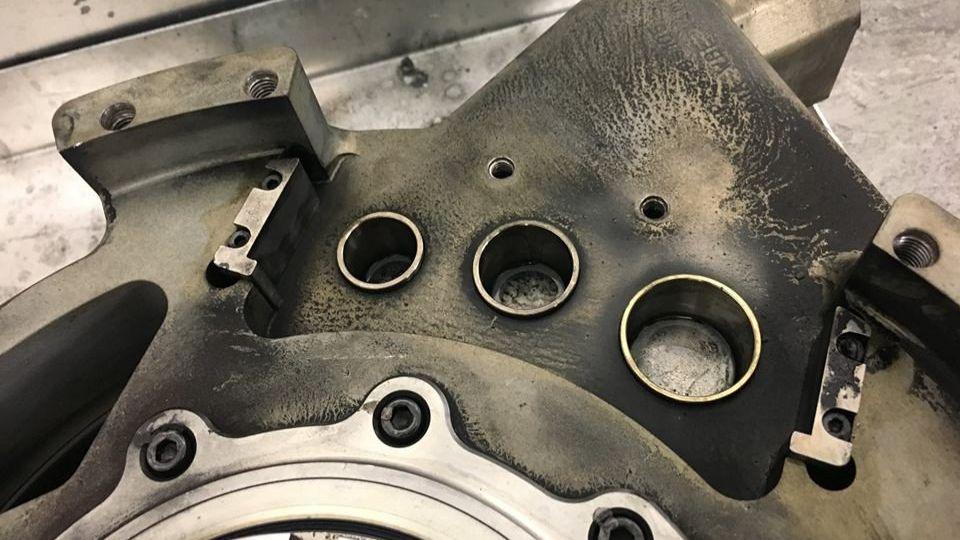
- Published26 October 2017
